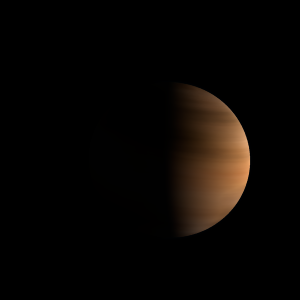|
|
Space Astro
|
Info for exoplanet "Dopubu'gyoja"
| Scientific (actual) data |
|---|
| Name | LHS 1610 b |
| Planet status | Confirmed |
| Planet mass | 51 |
| Mass sini | 49.5 |
| Orbital period | 10.5918 |
| Semi major axis | 0.0563 |
| Orbit eccentricity | 0.37 |
| Inclination | 114.5 |
| Angular distance | 0.001294 |
| Discovered | 2018 |
| Updated | 2025-03-19 |
| Omega | 89.62 |
| Tperi | 2457780 |
| K | 12527 |
| Publication | Published in a refereed paper |
| Detection type | Radial Velocity, Astrometry |
| Mass measurement type | Astrometry |
| Star name | LHS 1610 |
| Right ascension | 58.18° |
| Declination | 17.02° |
| Mag v | 14 |
| Star distance | 9.9 |
| Star mass | 0.17 |
| Star sp type | M4.0V |
| Wikipedia article | LHS 1610 b |
Back
| |
| Fictional info (?) |
|---|
| Suggested name | Dopubu'gyoja |
| Planet type | Huge cold gas giant |
| It was the one of the first exoplanets visited by a spacecraft, and one of the first to be successfully landed on.
One of this planet's moons is often dangerous because of the unreliable yet primitive oceanic creatures known to feed alone by finding nourishment in plants. Most Byami Jakopyu are closely similar to the Myaju Poda, have 5 arms and vary in length from 15 to 28 cm. Byami Jakopyu are known to live at temperatures from 80 to 180°C and to some degree very low gravity which is rare on this planet. |
| Estimated population | 700000 |
| Atmosphere | Oxygen | 52% |
| Methane | 45% |
| Water | 2.3% |
| Carbon dioxide | 0.31% |
| Atmospheric pressure | 0.08 bar |
 |
| Moon | Myohe-nnamyo | Very small slightly egg-shaped rocky moon |
| Google search for Dopubu'gyoja |
|
Website by Joachim Michaelis
|
|
|
|